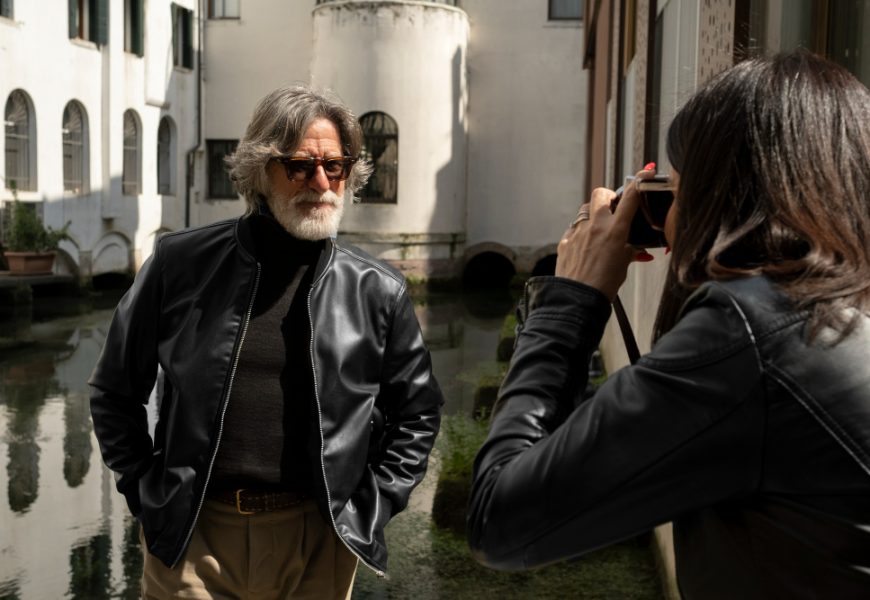Fame, at its surface, seems straightforward: recognition, admiration, material success, and a life of glamour. Yet beneath the curated performances, red-carpet appearances, and carefully orchestrated interviews lies a hidden landscape of experiences that rarely makes its way into the public eye. To be famous is to live, in some sense, in a glass house—every glance interpreted, every misstep magnified. But what often gets obscured in the shine of celebrity is the deeply human reality: the contradictions, the forgotten passions, the unusual hobbies, or very ordinary struggles that do not quite fit the expected narrative.
Exploring these overlooked sides of well-known figures allows us to see them as more than symbols of success or cautionary tales of excess. It reminds us that achieving fame does not dissolve grief, insecurities, or curiosity about the world. Instead, it often complicates them. When we pull back the curtain, we encounter musicians who quietly composed symphonies for themselves, actors who preferred long hours in gardens more than parties, leaders who secretly sketched portraits as a form of self-reflection, or legendary performers whose most meaningful work never reached the spotlight. These revelations challenge the assumption that every aspect of their lives is a performance and invite us to reflect on how narrow our understanding of them—and of fame itself—can sometimes be.
Beyond the Expected Narratives of Accomplishment and Scandal: Delving Into the Subtle, Overlooked, and Sometimes Deeply Personal Dimensions of Famous Individuals’ Lives
The stories most commonly told about public figures often fall into two categories: remarkable achievement or dramatic scandal. Yet reality is rarely that simple. The following lesser-known aspects of some brilliant individuals shed light on the variety of passions and vulnerabilities hidden behind their public images.
1. Unexpected Creative Pursuits
It is surprising to discover how many prominent figures in politics, film, or sports quietly held artistic passions that contradicted their public identity. Winston Churchill, remembered as a wartime leader, spent countless hours painting serene landscapes—a solace against the chaos of political life. Similarly, boxing legend Muhammad Ali was known to write short poems and sketches, melding art and rhythm in ways that only a handful of close friends ever saw during his prime. These pursuits often offered a kind of sanctuary where public figures could express sides of themselves that fame did not easily allow.
2. Intellectual Curiosity That Defied Stereotypes
Beyond the expected scripts of their professions, many famous individuals harbored intellectual passions that never reached center stage. Actress Hedy Lamarr, for example, was far more than a glamorous star; she co-invented a frequency-hopping communication system that later became foundational for modern GPS and Wi-Fi. Her scientific mind existed in tension with the Hollywood stereotype that defined her. Similarly, acclaimed musician Brian May, known as the guitarist of Queen, is also an astrophysicist who has contributed to NASA projects. These dimensions remind us that fame often oversimplifies, and brilliance can flourish in multiple, unexpected directions.
3. Quirks and Rituals Behind Public Grandeur
Famous lives often appear orchestrated and deliberate, but subtle quirks tell a different, more human story. Albert Einstein, revered as the archetype of intellectual genius, often played the violin to relax and gather his thoughts. Beyoncé, whose public image radiates unshakable confidence, has spoken about stage fright stemming from her childhood—revealing that even the most commanding performers negotiate private battles with nerves and vulnerability. Such contradictions make their achievements feel both more remarkable and more relatable at the same time.
4. Privately Fought Struggles
It is also essential not to romanticize fame as a protective shield against personal hardship. Behind enduring legacies, many public figures battled anxieties, health challenges, or profound loneliness. Actor Robin Williams, whose career revolved around bringing joy and laughter, fought privately with depression, a reminder of the profound contradictions fame often conceals. Similarly, Princess Diana’s well-documented struggles with mental health and the constraints of royal life revealed the fragility that can exist even within seemingly enviable positions of privilege.
5. The Everyday Humanity Beneath the Extraordinary
Sometimes, the hidden sides of the famous are unexpectedly ordinary. Certain global icons preferred quiet evenings cooking or working in their gardens to the glittering events expected of them. Audrey Hepburn, remembered for her timeless elegance, spent much of her later life dedicated not to Hollywood but to humanitarian work with UNICEF—devoting her days to advocacy, often away from the cameras. These quieter acts, though less dramatized, paint a richer and more meaningful picture of her legacy.
Why These Hidden Narratives Matter
When we only consume images of triumph, scandal, or spectacle, we risk turning human beings into one-dimensional characters. Learning about the hidden layers—the hobbies, unexpected talents, or deeply private hardships—allows us to appreciate not only the complexity of famous people but also the complexity of being human more generally.
It raises important ethical questions: What do we choose to celebrate? What do we ignore? Do we, as an audience, allow room for nuance in our perception of public figures, or do we reduce them to symbols that fit our comfort? In truth, there is a responsibility in how we consume celebrity narratives. When we recognize that someone like a celebrated athlete also quietly paints canvases no one else was meant to see, or that a pop star finds grounding in gardening, we begin to dismantle the illusion of perfection that fame projects.
Ultimately, this perspective enriches not just our understanding of them but also our understanding of ourselves. It illustrates that greatness and vulnerability, extraordinary talent and ordinary struggle, can—and often do—coexist within the same person.
Conclusion: Fame as a Human Story
Behind every dazzling spotlight lies a complex individual—sometimes fragile, sometimes brilliant in unexpected ways, always human. By exploring the lesser-known dimensions of famous lives, we move beyond admiration or judgment and toward a deeper appreciation of the universal human experience. The balance between who they appear to be and who they truly are is delicate, shaped not just by personal choices but also by societal expectations.
If anything, these hidden stories remind us that while fame magnifies a person’s visibility, it does not erase what makes them human: their doubts, contradictions, quiet joys, and forgotten passions. And in acknowledging those unseen sides, we learn to celebrate not just the spectacle of success but the authenticity of life lived fully—publicly extraordinary, and privately, often, beautifully ordinary.







